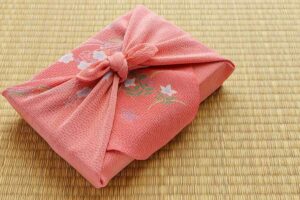Compared to many, Japan has hardly any arable land. Current estimates from 2018 put arable land at 11.4% of the land share in Japan.
This used to be 14.1% in the 1960s. If we compare this to other countries, it’s not a lot.
This means that fruit orchards in Japan are small. Coupled with the high cost of living, fruit can be quite expensive.
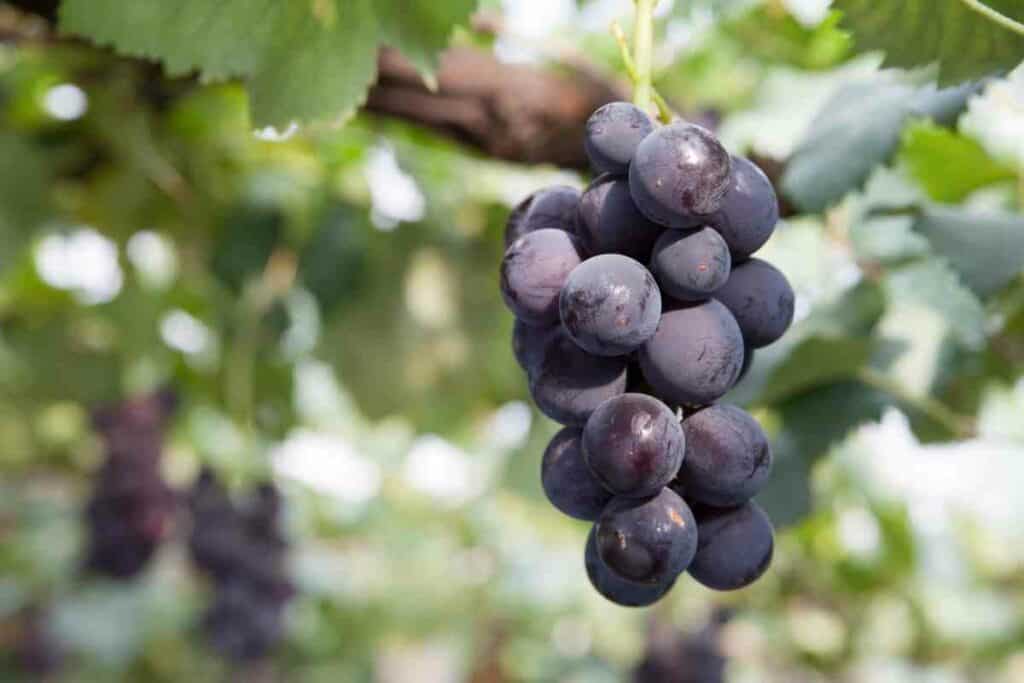
To make money, Japanese fruit orchards grow top-quality products that can fetch high prices.
Thus, it’s typical to have high-quality fruits on sale. What’s more, you’re likely to see some unique fruit varieties too.
Japanese people love their fruits. In the past, it wasn’t always possible to get a lot of fruit but nowadays, there’s plenty available.
Japanese fruits are unique, and you’ll find many varieties that you just can’t get outside of the country.
Here is a list of 18 Japanese fruits for you to try during your travels.
Table of Contents
1 – Shikwasa
This fruit is a citrus that’s a little like lime.
It is juicy with a richness to its flavor. These fruits aren’t that common on mainland Japan but they’re a part of daily life on the Okinawan Islands.
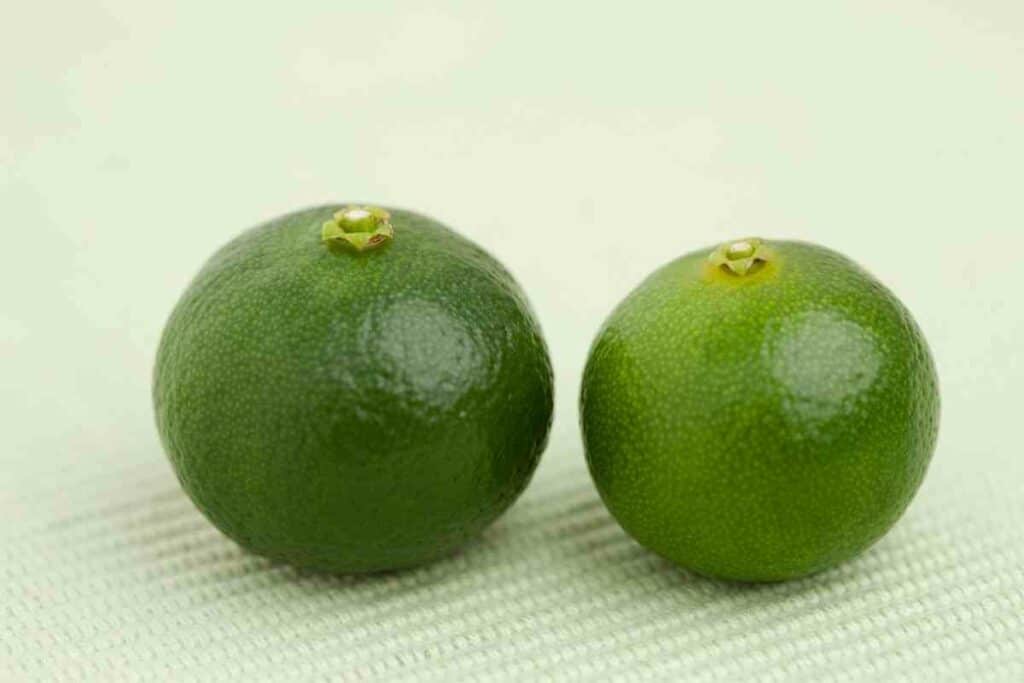
From August to December, you’ll find shikwasa everywhere on the islands of Okinawa and you’ll see lots of things flavored with this fruit.
They’re used to make jams and juices and are also used to add flavor to other dishes.
You’re even likely to see old homes growing shikwasa in their backyard on the islands.
2 – Nashi
Otherwise referred to as a Japanese pear, Nashi are somewhat similar to regular pears that are found in the West.
However, nashi are larger and crispier, and their taste is lighter. Texture-wise, they’re more like apples. Nashi date back to prehistorical times.
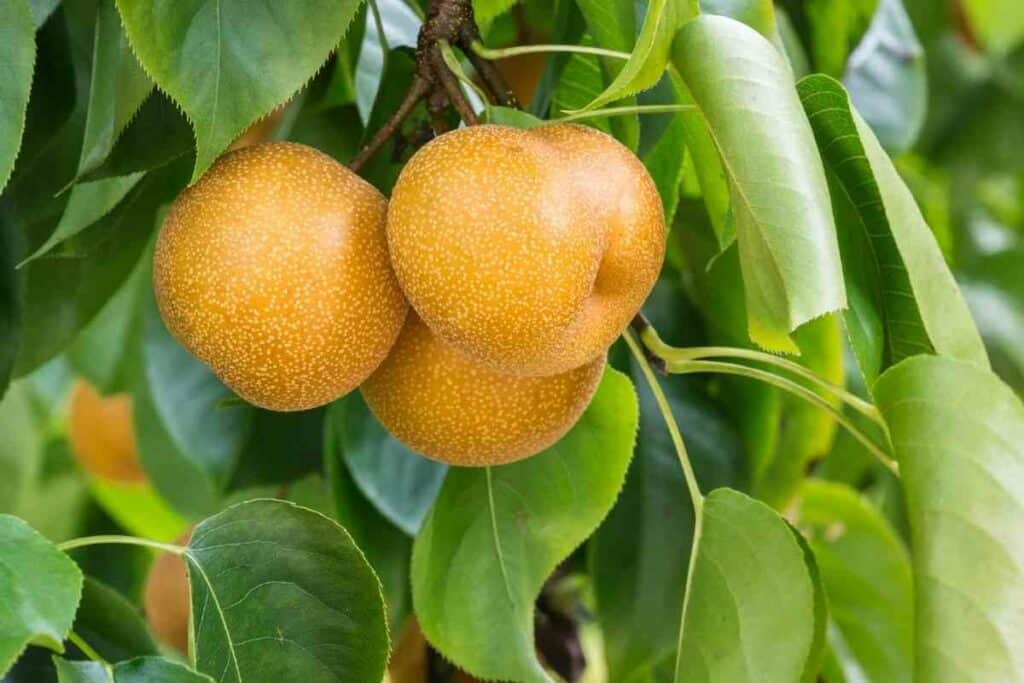
This fruit is in season from the end of summer until autumn.
Unlike regular pears, the majority of people tend to eat these without the skin simply because the skin is rougher.
It’s also common to use these in cooking and baking. Japanese people love pear tarts.
3 – Ume
The Ume is known as the Japanese Plum.
However, these are more commonly related to apricots, botanically speaking.
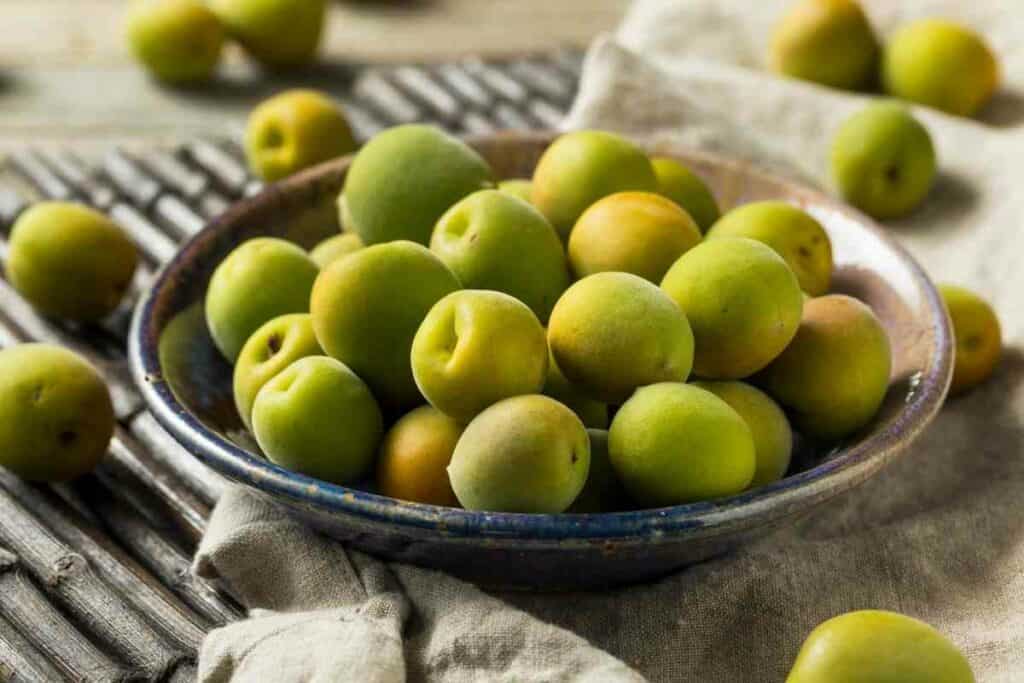
These grow on trees and are known for their sour, unique taste. It’s rare to see these eaten raw. Rather, they’re used for pickles (umeboshi pickles) or to make wine.
Ume blossom flowers bloom towards the end of winter and so they’re very popular as the first flowers to appear.
For this reason, they’re considered the harbingers of spring. The fruits are ready from June through to July.
4 – Kyoho
Kyoho are dark grape-like fruits and are one of Japan’s most famous fruits.
They’re known for their light taste and juiciness.
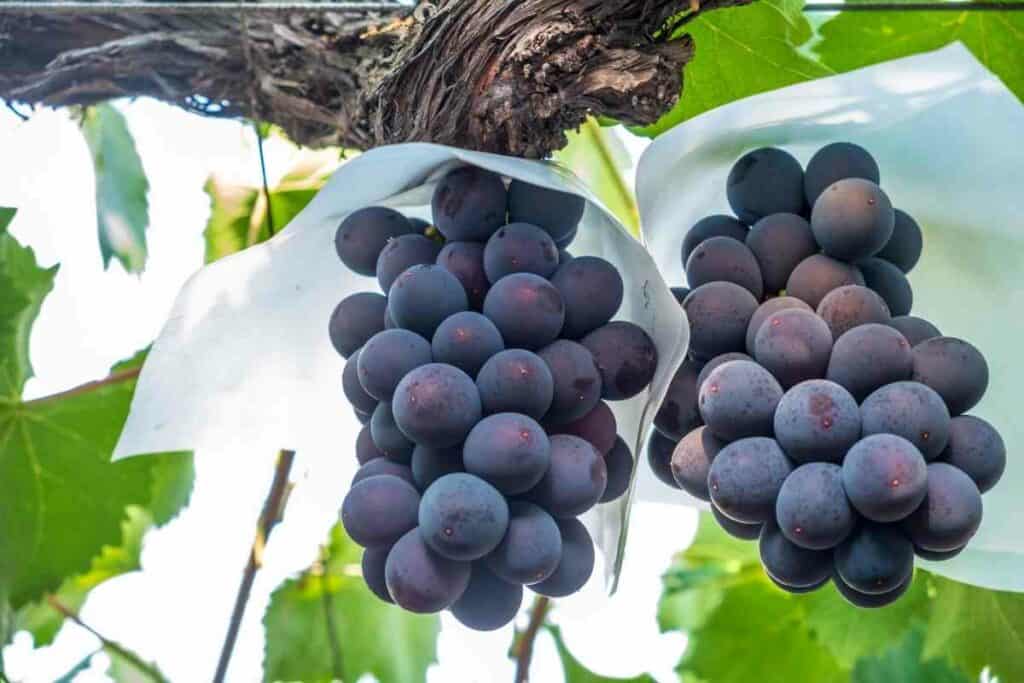
These fruits can be as big as plums and the majority of Japanese people will peel them before eating as their skins are thick.
Kyoho are ready for harvesting between August and November.
5 – Setoka
This is a citrus fruit that has no seeds or pips. Setoka are famous for being sweet.
They have a thin, easily peelable rind and a very thin pith that is edible. You see these fruits during the winter until early spring.
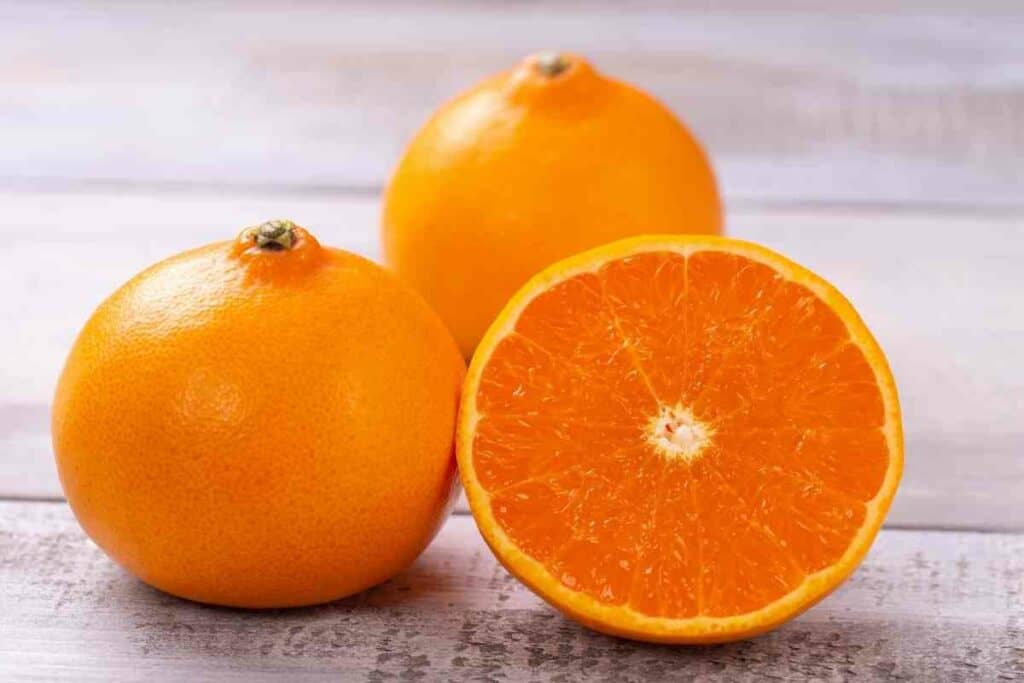
These fruits are actually a complex hybrid of other varieties and were only registered as a variety of their own in Nagasaki in 2001.
They were developed as a high-quality, luxury variety of orange.
6 – Fuji Apple
Fuji apples are famous in Japan and are the most popular of all Japanese apples.
This type of apple was first created during the 1930s in the Tohoku Research Station in Fujisaki.
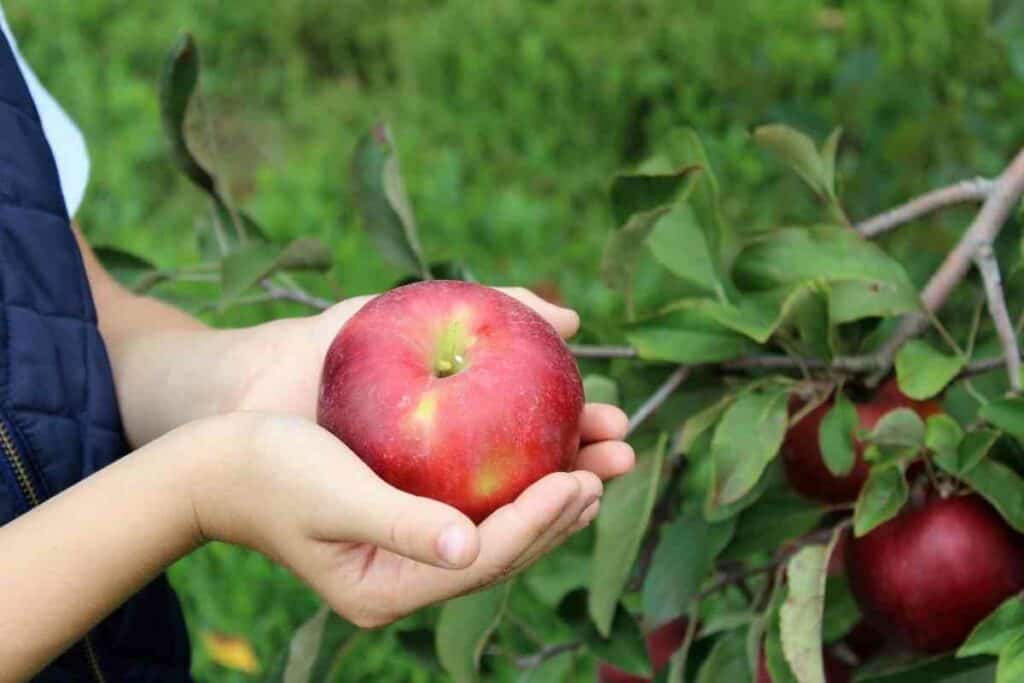
It was developed as a cross between the red delicious and the Ralls Janet. After lots of tests and trials, it was brought to market during the 1960s.
Fuji apples are one of the most popular apple varieties in the world. You can find Fuji apples all year round. Their peak season is late autumn and through winter.
What’s great about these apples is that they are sweet, crisp, and large, and they also have long shelf lives.
Due to their popularity, it’s hard to find any other apple varieties in Japan.
7 – Kinkan
Kinkan are also known as kumquats.
These are small, bite-sized fruits resembling oranges.
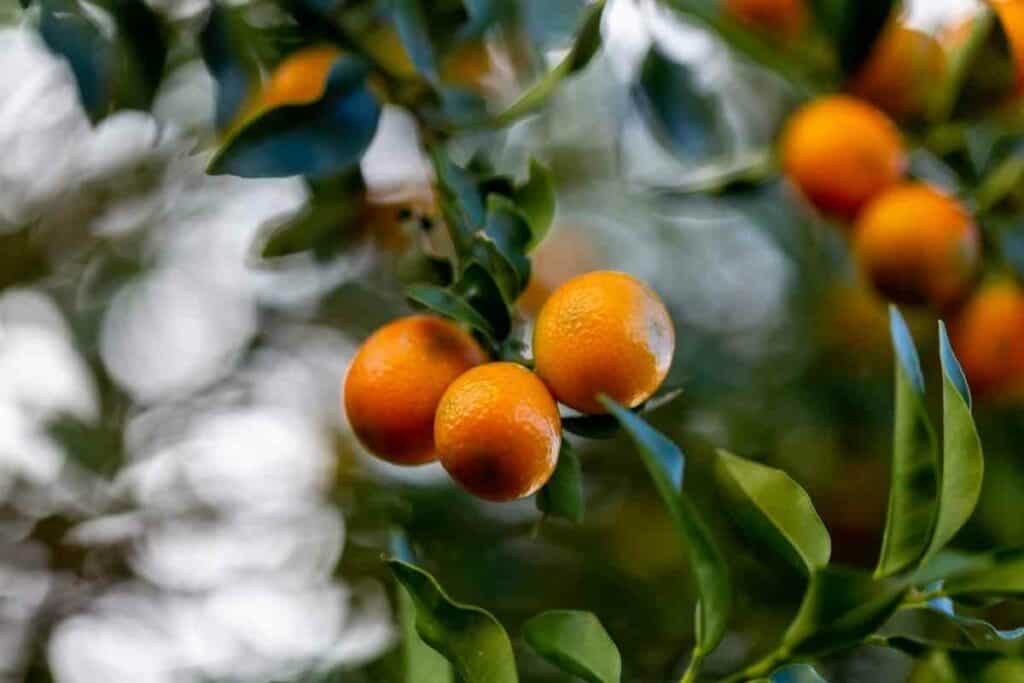
They are typically eaten without taking off the skin and have a sour, pleasant taste. It’s common to see these fruits in candied form.
Kinkan are in season between November and February.
8 – Kaki (Persimmon)
Kaki – also called persimmon – is another popular Japanese fruit.
These have been grown in Japan from the seventh century and are commonly eaten during autumn and winter (between November and February) when they’re in season.
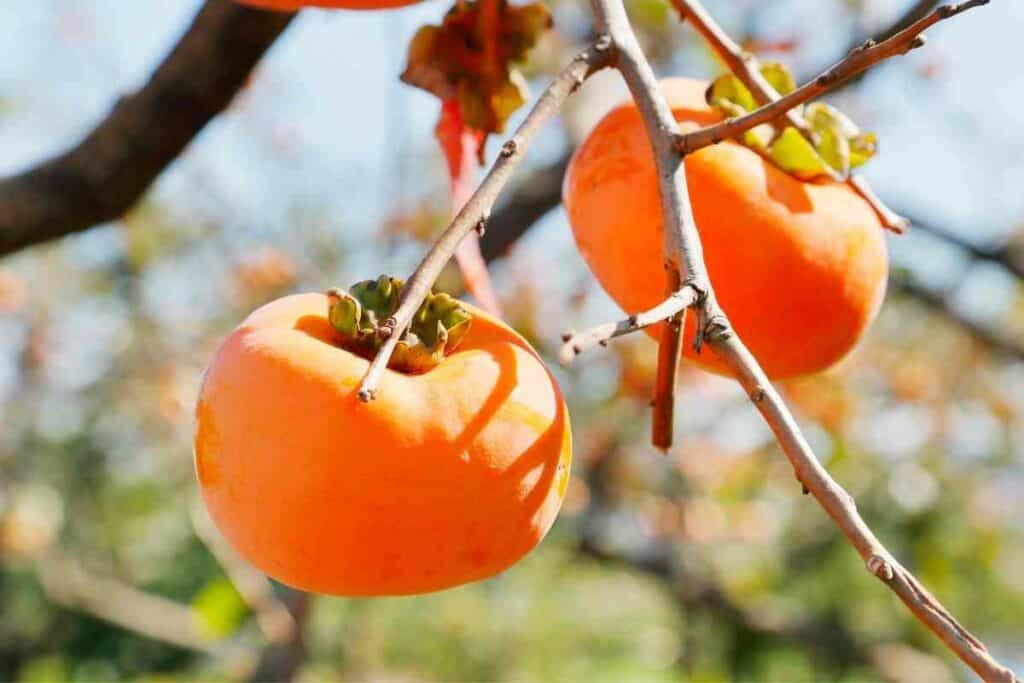
To eat kaki, you’d normally peel them and cut them up but it’s also possible to eat them as they are. Like figs, you can also dry these fruits.
Unusually, kaki trees will lose all of their leaves before they bear fruit, and you’ll often see these bright orange fruit adorning barren trees in the countryside.
9 – Yubari King Melon
This melon is a hybrid made from two different cantaloupe melons.
As its name suggests, the Yubari King was first cultivated in Yubari, in Hokkaido.
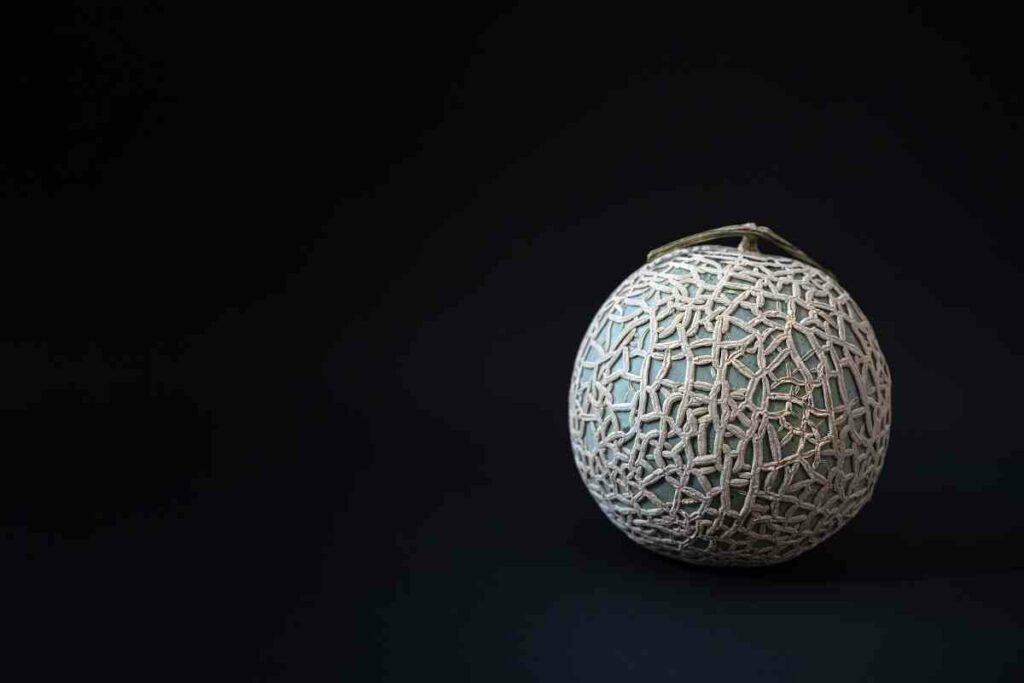
Yubari King melons are among the most expensive of all Japanese fruits.
Believe it or not, in 2008, two of these melons sold for a huge 2.5 million Japanese Yen, which is equivalent to $20,000.
This doesn’t mean that all of these melons cost this much, but they are pricy, nonetheless.
If you’re traveling in Japan and have the cash to spare, you must try a Yubari King melon.
10 – Mikan
Mikan are one of Japan’s most popular types of oranges.
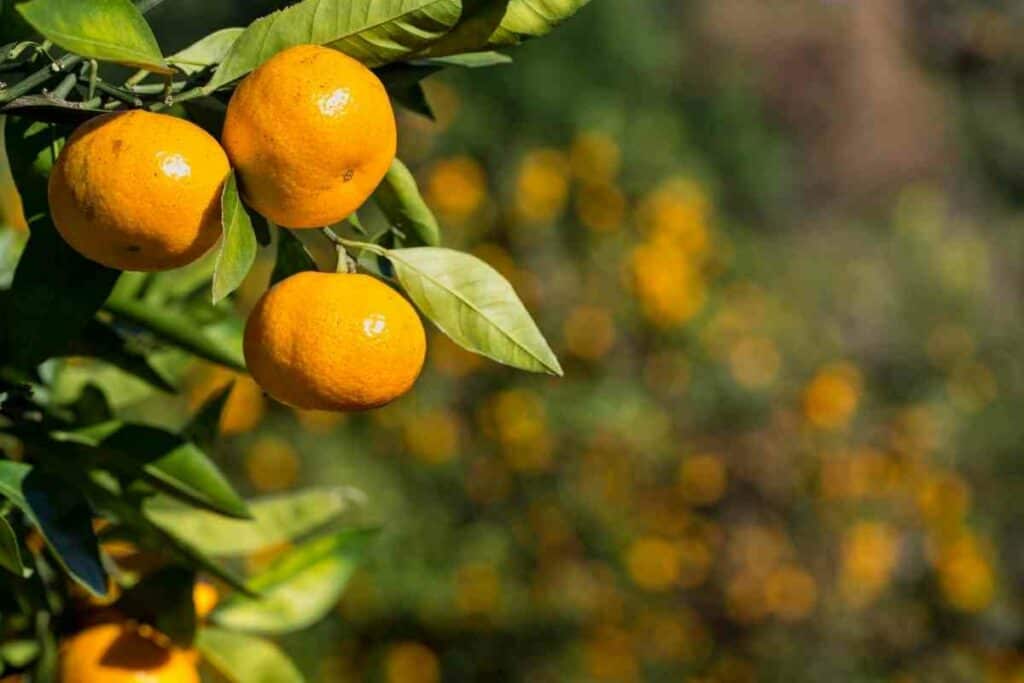
They’re available from October until January and are popular thanks to their peel being easy to remove and their lack of seeds or pips.
As citrus fruit go, they’re small and delicate. Peeling them is so easy that you can eat lots of them mindlessly! They come in 10-kilo boxes (22 pounds).
Mikan trees are also popular additions to residential gardens.
11 – Akebi
This is one of Japan’s strangest fruits.
It has a soft and sweet pulp that is not too dissimilar to white dragon fruit. These fruits are in season from September.
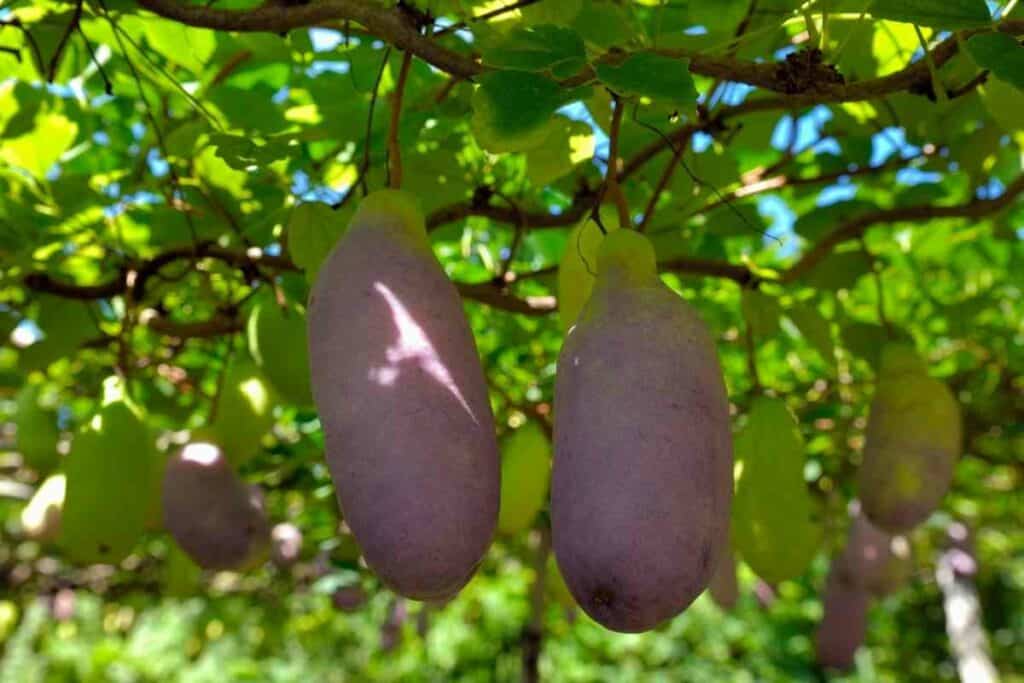
They’re a good source of potassium, protein, folic acid, and Vitamin C.
The akebi are quite mysterious and they grow on vines that are semi-evergreen.
They were first found in mountainside forests in rural Japan. It’s only in recent years that they’ve been cultivated and sold in grocery stores.
Their outside is bright purple when ripe and they feel somewhat similar to lychees but are much softer.
12 – Strawberries
Though strawberries are common all over the world, Japanese strawberries are particularly delicious.
You’ll usually have them from spring through to summer.
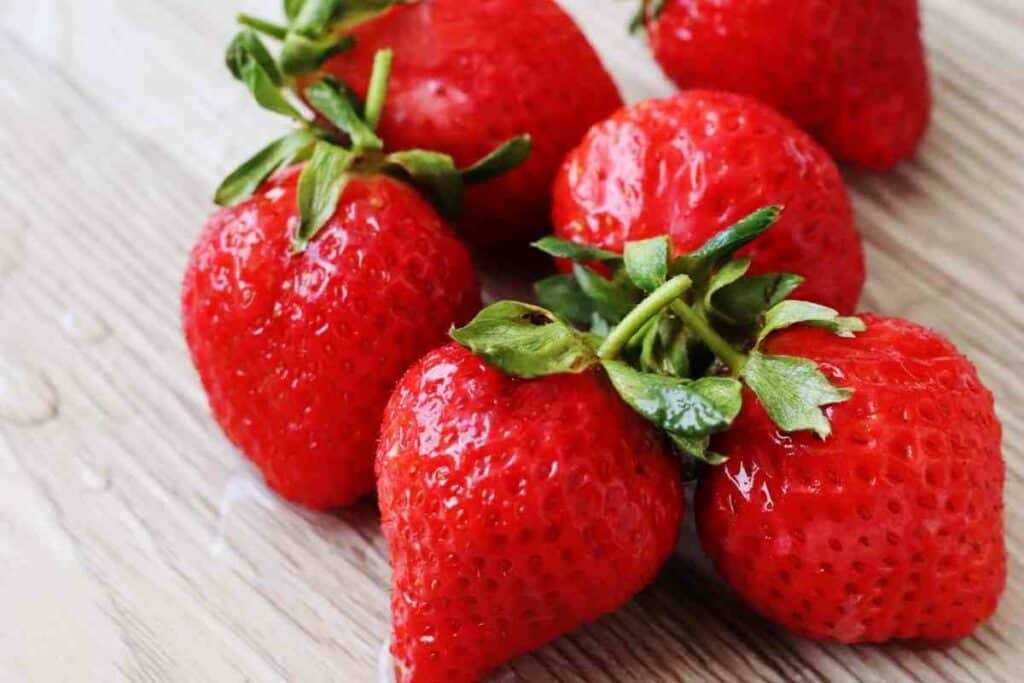
In Japan, there is also a white strawberry variety.
These are highly regarded and seen as a luxury. Two of the most expensive ones are called Shiro Houseki and White Jewel.
You can pay around $10 for a single white strawberry!
Japanese strawberry varieties all have branded names – and there are more than three hundred different varieties.
13 – Yuzu
Another Japanese citrus fruit to make our list is the Yuzu.
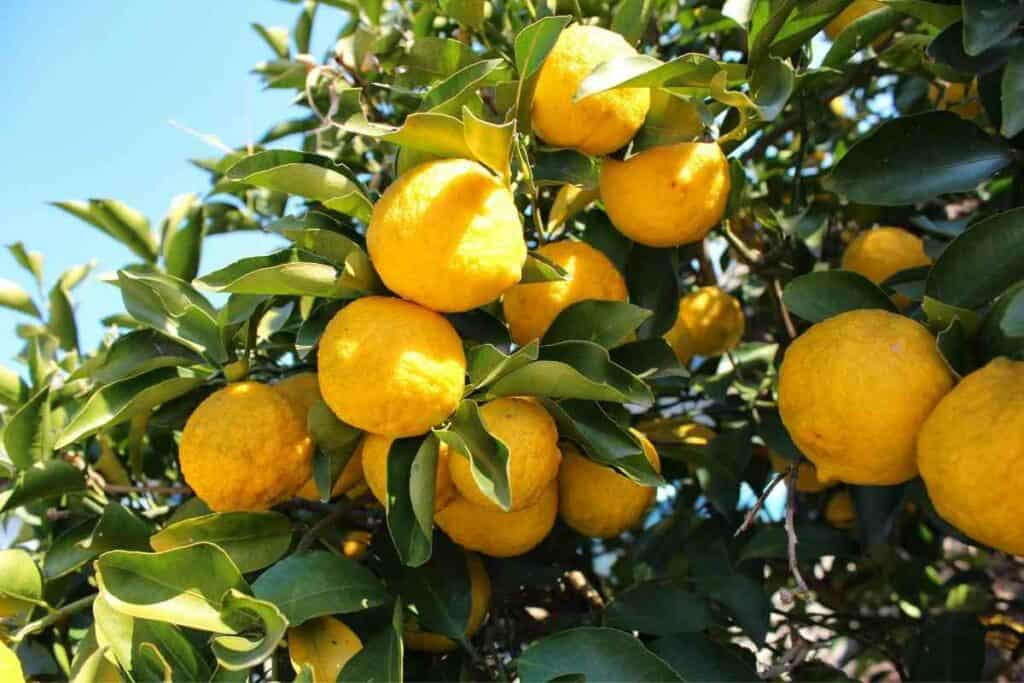
This has a bitter and strong taste and like lemons, you don’t usually eat these raw. Instead, yuzu are used in cooking as well as in drinks.
They’re available towards the end of the year in November and December and are quite pungent.
Their skin is green initially but turns yellow when the fruit is ripe. Unlike lots of Japanese fruits, these aren’t particularly pleasing to the eye.
14 – Kabosu
Kabosu are green, sour fruits that are closely related to yuzu.
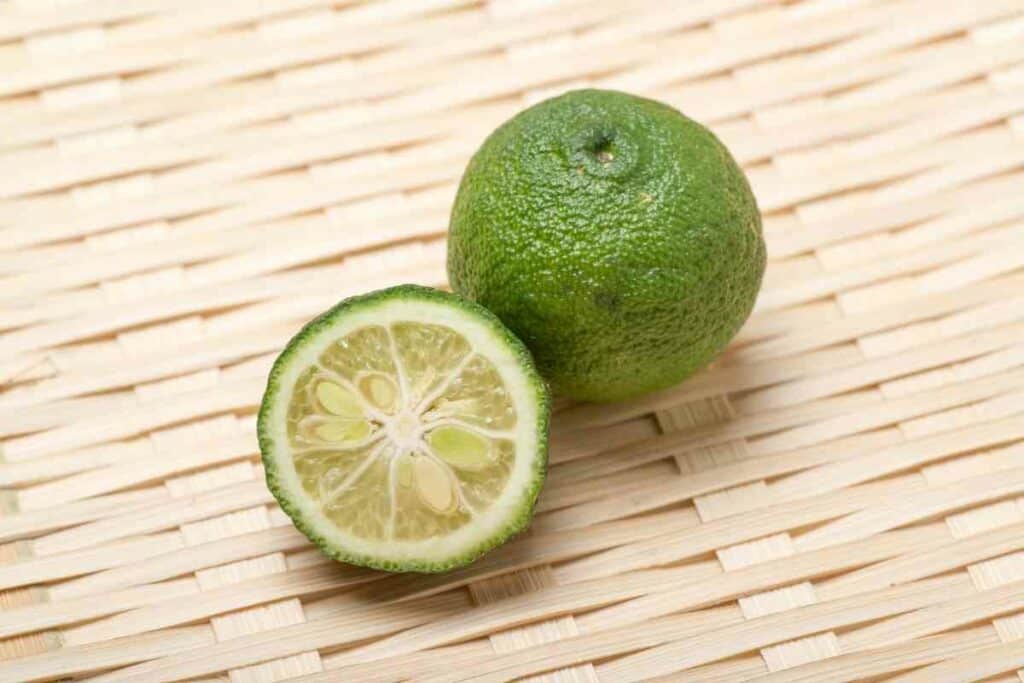
You’ll find these in abundance in Oita but they’re not common throughout the rest of Japan.
Kabosu juice is most often used in toppings for fish or in beverages. They’re available from August to October.
15 – Momo (Japanese peaches)
Japanese peaches are locally called momo.
They’re typically larger and softer than their Western counterparts. They have white, sweet flesh and thin skin.
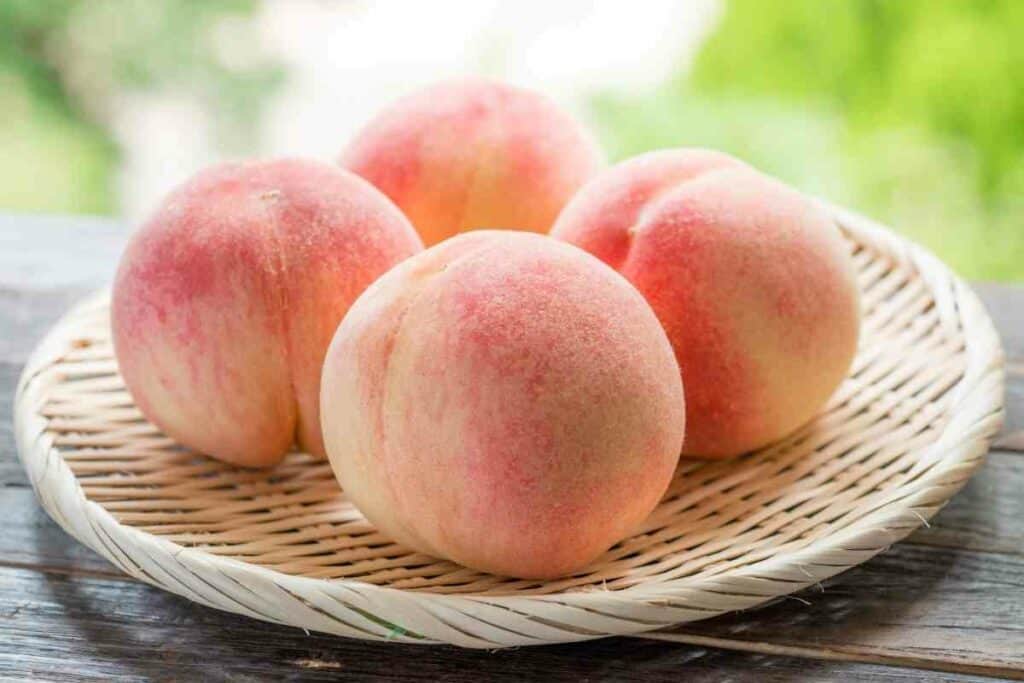
These come into season during the summer. Japanese people tend to peel them before eating but you can eat their skin if you want.
These peaches have been grown for over two thousand years!
16 – Satonishiki
Japanese people love cherries and satonishiki are one of the most famous types.
These are cultivated in Yamagata Prefecture – an area that produces around 70% of Japanese cherries.
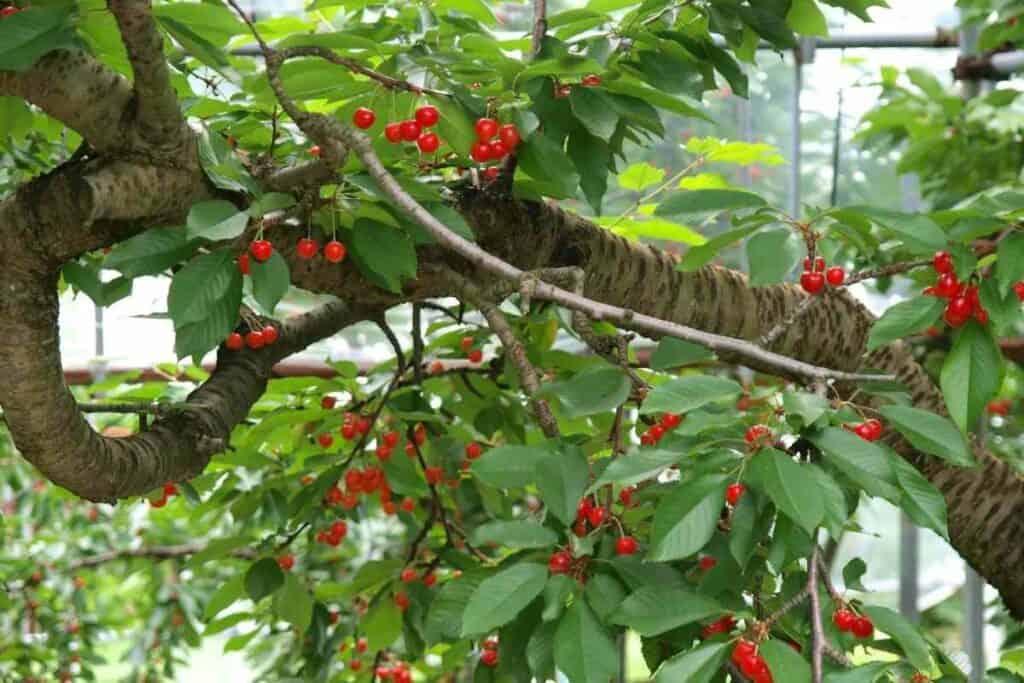
Their season runs from May until July.
Japan is famous for its cherry blossoms and the flower is ubiquitous. However, most of these don’t bear fruit.
Satonishiki are bright red and considered to be a luxurious fruit. You can get them in Japanese supermarkets.
17 – Daidai
Daidais don’t have a season and they’re a resilient citrus fruit that will remain on a tree for years if they’re not picked.
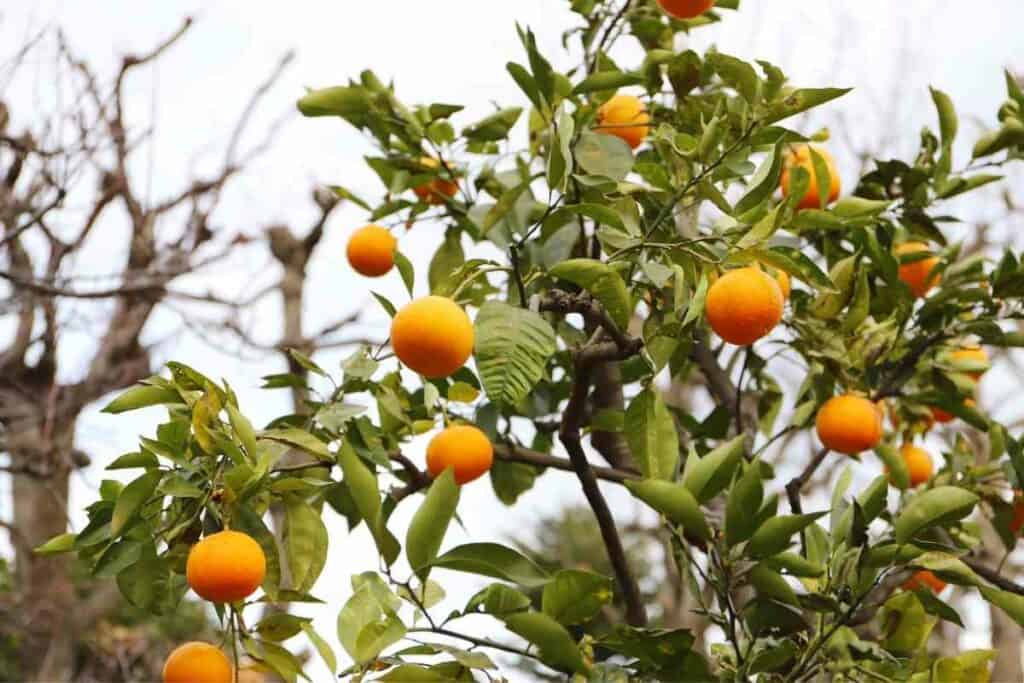
Daidai are orange in winter and green in summer. Due to their long lifespan, they’re a Japanese symbol of longevity.
They’re also used for New Year decorations.
Read later – 10 Best New Year Celebrations In Japan
18 – Sudachi
These citrus fruits are in season from October until November.
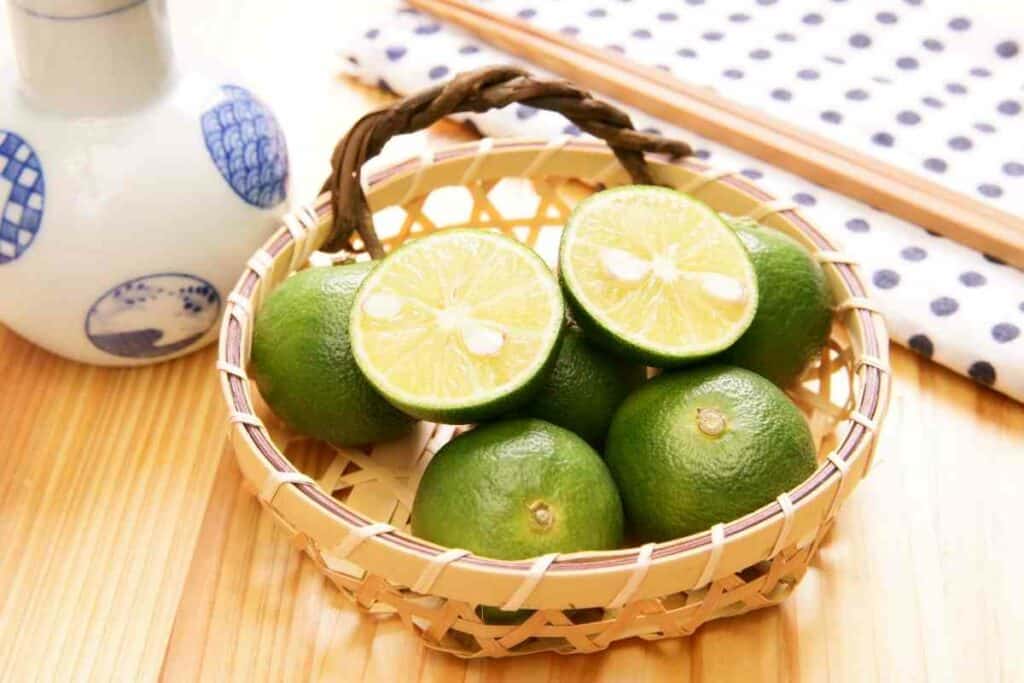
They have a sour taste, which is almost orange-like. Even though these look like limes, they taste nothing like them.
You won’t find sudachi being eaten raw as a fruit. Rather, they’re used in cooking.
Final Thoughts
It’s clear that Japan has some amazing fruits, many of which are simply not available in the West.
You can buy them directly at farms, fruit markets, or in supermarkets.
Though fruit is expensive in Japan, this is because it is of such a high quality (as well as the fact that arable land is scarce).
What’s more, there are many fruits that are considered to be premium fruits in this country, which increases their price.
You Might Also Like
- Best Japanese Knives Top Picks for Every Kitchen
- Japan’s Bold New Trend: Dressing Like a British Gentleman (or at Least Trying)
- 7 Best Japanese Sunscreen Products You Can Buy Online
- 5 Best Japanese Makeup Brushes for a Flawless Finish
- 7 Benefits Of Tatami Mats You Should Know
- The Best Furoshiki Wrapping Cloths: Inspiration, Ideas & Cloths You Can Buy






